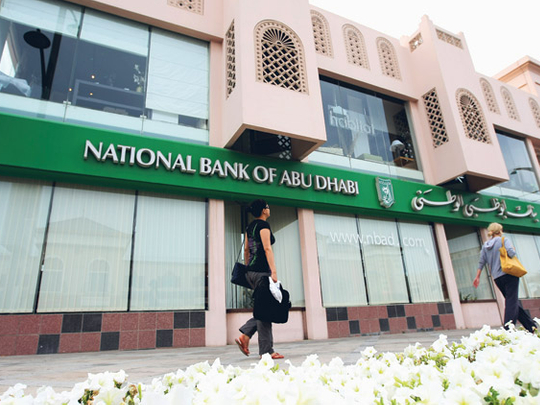
Dubai: The UAE's banking sector remains well protected from any potential stress from the financial slowdown thanks to the firm support of the UAE Central Bank and the Federal government.
In response to the liquidity squeeze that began in the third quarter of 2008, the Central Bank of the UAE guaranteed all bank deposits for three years and provided a Dh50-billion liquidity support. The Ministry of Finance injected Dh70 billion of deposits, which it later agreed to convert into subordinated debt, and the Government of Abu Dhabi injected Dh16 billion of Tier 1 capital into five largest banks based in Abu Dhabi.
Various analysts and rating agencies, who have stress tested the UAE's banking system during the last two years, have concluded that the local institutions are well capitalised to withstand any potential deterioration of asset quality.
"UAE banking sector's strong capitalisation should make its current challenges manageable despite rising impairments and difficult operating conditions. As such, Fitch believes that fresh government support for the sector is less likely to be required," said Robert Thursfield, a Dubai-based director in Fitch's Financial Institutions team.
UAE banks faced significant asset quality problems in 2009, but their capital levels and strong core profitability have allowed them to absorb losses without significantly undermining their creditworthiness. Nevertheless, asset quality pressures stemming primarily from Dubai-based entities and significant exposure to real estate sector continue to weigh on their balance sheets.
Loan growth
Loan growth has been negligible across UAE banks in 2009 and in the first half of 2010 as fear of mounting non-performing loans kept banks risk-averse and earnings took a beating as provisions climbed.
"The operating environment remains difficult, with low economic growth and investment, weak demand for loans, as well as investor confidence issues which are curtailing the banks' ability to access low cost, wholesale funding. As a result, in 2009, the UAE banks did not engage in any significant new lending," said John Tofarides, an analyst with Moody's.
The overall loan growth across the banking sector was 0.8 per cent in the first half of this year compared to an average growth of 1.5 per cent in the first half of 2009 and 24 per cent in the same period in 2008. Analysts and bankers expect loan growth to remain low as banks are focusing more on balance sheet repair.
"We expect loan growth to remain under pressure for the rest of the year. We believe much of the risk aversion on the part of banks stems from uncertainty about potential future losses and write-downs," said Sofia Al Boury, banking analyst at Shuaa Capital.
Most leading banks reported declines in profit growth in the first half of this year. The earnings were impacted by the virtual stagnation of balance sheet growth and substantial write-downs on loans and investment impairments.
Shuaa Capital recently conducted a stress test on a sample of eight UAE banks such as Emirates NBD, National Bank of Abu Dhabi, Abu Dhabi Commercial Bank, Mashreqbank, First Gulf Bank, Dubai Islamic Bank, Union National Bank and Commercial Bank of Dubai, which account for almost 70 per cent of bank assets last year. "Our tests found the banking sector is sufficiently capitalised to withstand the significant deterioration in asset quality. Under our base case, average total capital adequacy ratio for our sample at 14.9 per cent is well above the 12 per cent UAE minimum, and average Tier 1 capital at 9.8 per cent above the 8 per cent UAE minimum," said Al Boury.
Analysts said under the current economic environment of extreme risk aversion among banks additional capital injections could help. Moody's considers the liquidity position of UAE banks to be satisfactory, and would expect additional funding support from the federal government, if required. In 2009, UAE banks managed their liquidity by curtailing loan growth, and they are continuing this approach in 2010 by extending new lending on selective basis.












